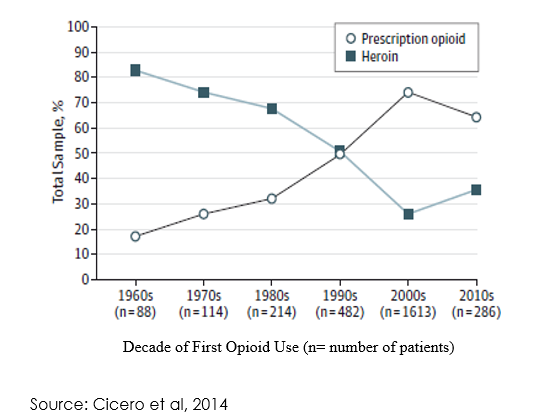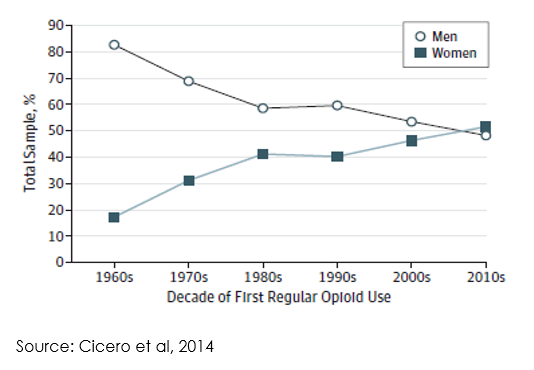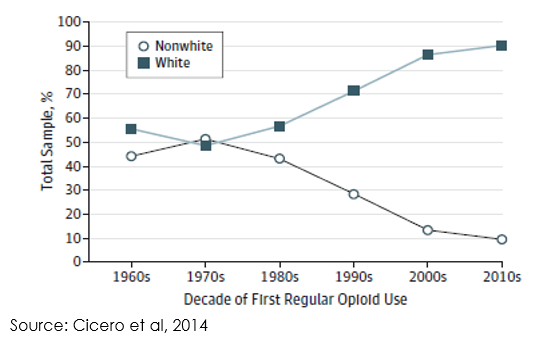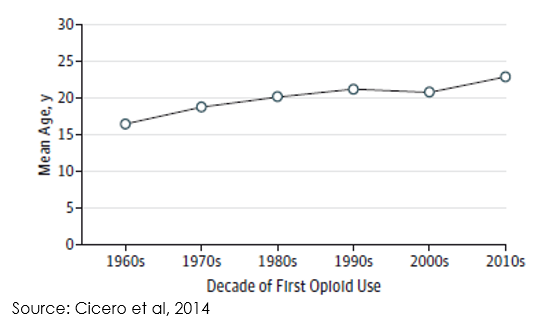White, Suburban & Addicted to Heroin
Heroin has long been considered a problem of poor minorities. But with the current overdose epidemic, this study takes a second look at this assumption of who does, and does not, use heroin.
WHAT PROBLEM DOES THIS STUDY ADDRESS?
According to mainstream media reports, heroin use disorder was once considered a problem that was confined to poor, inner city, minority populations. In recent years, heroin use disorder has become more visible among populations who reside in affluent suburban and rural areas. This study empirically tested if epidemiological trends that people noticed over the previous years remain true today.
HOW WAS THIS STUDY CONDUCTED?
This study analyzed data from the ongoing nationwide Survey of Key Informants’ Patients (SKIP) Program.
- READ MORE ON STUDY METHODS
-
The SKIP Program consists of more than 150 publicly and privately funded treatment centers located in 48 states that recruit adult patients to complete an anonymous survey.
Patients in the SKIP program must meet DSM-IV criteria for an opioid use disorder (prescription opioid drug or heroin). Patients were included in the analysis if they entered the program between 2010-2013 and had a primary heroin use disorder which resulted in 2,797 participants. At the time of survey completion, the majority of participants included in the analysis were in their early 30’s, white (79.5%), and male (56%). Using retrospective reports, the researchers assessed if heroin versus prescription opioids were the first opioid ever used by the patient and if this trend changed over the decades. The researchers also assessed whether there were differences in terms of sex, race, and age of first use, depending on what decade the person first began using opioids.
In addition, to obtain a more detailed perspective on these trends, a subset of 54 patients who currently have a heroin use disorder plus a lifetime history of prescription opioid use disorder responded online to a series of open-ended questions about their opioid use. The researchers sought to determine:
1) why they chose to use heroin more frequently than prescription opioids, and
2) whether they prefer to use heroin or prescription opioids in a hypothetical world where cost and accessibility would not limit drug selection.
WHAT DID THIS STUDY FIND?
Of the patients who used their first opioid in the 1960s, more than 80% initiated with heroin, & 75% of participants who began their opioid use in the 2000s initiated with a prescription opioid.

Patients who started their opioid use in the 1960’s were primarily men (82.8%). In contrast, by 2010 there were nearly equal numbers of males and females with heroin use disorder seeking treatment.

Patients who started their opioid use prior to the 1980’s were equally white and nonwhite. After the 1980’s the ethnicity of patients who experienced their first regular opioid use were increasingly white and decreasingly nonwhite.
Nearly 90% of patients who began regular use in the last decade were white.

Regarding age of initial opioid use, 16.5 years was the average age in the 1960’s which increased to 22.9 by the year 2010.

WHY IS THIS STUDY IMPORTANT
This study showed significant demographic differences between patients with heroin use disorder who initiated using opioids 40-50 years ago versus patients who initiated use in recent decades.
Patients with a heroin use disorder who began regular opioid use 40-50 years ago often initiated use with heroin (compared to prescription opioids), were about 16 years old when they first used an opioid, predominantly male, and equally likely to be white or nonwhite.
VS.
Patients who began regular opioid use in recent decades often initiated use with prescription opioids, were almost 23 years old when they first used an opioid, equally likely to be male or female, overwhelmingly white, & living in small urban or non-urban areas.
These findings can be compared to mainstream media reports suggesting individuals suffering from heroin use disorder are from the inner city, poor, & of ethnic minority background.
Contrary to media speculation which may have racialized heroin use disorder as minority problem, this data suggests that ethnicity was not a factor among treatment seeking individuals who began their first regular opioid use prior to the 1980’s.
In fact, prior to the 1980’s individuals were equally likely to be white or nonwhite. Since then, the percentage of treatment seeking individuals who experienced their first regular opioid use were significantly more likely to be white.
Many patients with a recent heroin use disorder, began by using prescription opioids.
This represents a change in the last 40-50 years. This may be because prescription opioids are more readily available to individuals, particularly as an initial opioid to use given the common perception that since prescription opioids are legal, they are considered more trustworthy and predictable if used. The availability of opioids has created an additional pathway into heroin and prescription opioid addiction.
The three main reasons why individuals have chosen heroin as their primary drug of choice:
- heroin is stronger
- heroin is cheaper
- heroin is more accessible than prescription opioids
Half the participants would prefer prescription opioids over heroin if there were no limiting factors to consider such as price and availability. Participants reported that prescription opioids produce a “cleaner” high and are more safe than heroin given it is more difficult of overdose.
- LIMITATIONS
-
- This data cannot speak to if there was a shift in residence (inner city to rural areas) among patients with heroin use disorder, however, the majority of patients currently reside outside of major urban areas. Furthermore, this data does not address if treatment seeking populations for heroin use disorder were poor versus not poor during the decade when their first regular opioid use occurred.
- The qualitative sample is limited to individuals who had access and the skill set to complete an online survey. As a result, the qualitative responses may represent a group of treatment seekers who are more adept at using computers and online technology.
- As mentioned by the authors, an additional limitation is that the distribution was heavily skewed toward more recent users. This may create potential biases in terms of survival cohorts or in terms of missing data from those who have entered remission.
BOTTOM LINE
- For individuals & families seeking recovery: The presence of heroin use disorder can be found all across the country, particularly in rural and small urban areas. This data has shown that regardless of many demographic characteristics, the risk of heroin use disorder can penetrate any group. Therefore, regardless of residence, gender, ethnicity, or age, it is important to not be complacent about who is the most vulnerable to heroin use disorder.
- For Scientists: This sample was limited to treatment seeking individuals with heroin use disorder. The symptoms of treatment seeking samples tend to be more severe, complex, and more prolonged than nontreatment seeking samples. As a result, these findings should be interpreted as a reflection of the sample selection more than a representation of all individuals with heroin use disorder.
- For Policy makers: This study shows a marked shift in the demographics of individuals with heroin use disorder seeking treatment over the past several decades. Demographically, patients with heroin use disorder are largely characterized by both genders, are commonly but not exclusively found in non-urban areas, and are overwhelmingly white. Allocation of resources to provide monitoring and surveillance of the evolving epidemiology of heroin use disorder could help prepare researchers and treatment providers to meet the needs of individuals affected by heroin use disorder.
- For Treatment professionals and treatment systems: Implications from this study suggest that providers should be prepared to treat a changing demographic of patients with heroin use disorder. Patients who have experienced their first regular opioid use more recently are more likely to have initiated with prescription opioids, equally likely to be men or women, are more likely to be white, and from nonurban areas. It is advised that providers work toward an in-depth understanding of patients unique experiences and perspectives to inform treatment and recovery plans.
CITATIONS
Cicero, T. J., Ellis, M. S., Surratt, H. L., Kurtz, S. P. (2014). The changing face of heroin use in the United States a retrospective analysis of the past 50 years. JAMA Psychiatry, 71(7), 821-826.

